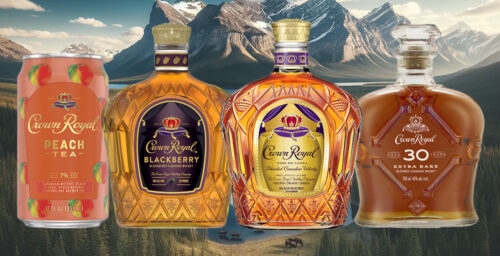Editor’s Note: This whiskey was provided to us as a review sample by the party behind it. This in no way, per our editorial policies, influenced the final outcome of this review. It should also be noted that by clicking the buy link in this review our site receives a small referral payment which helps to support, but not influence, our editorial and other costs.
Redwood Empire is a brand that’s been through some transition. It began life as the mandatory whiskey foray of Purple Brands, brainchild of Derek Benham (whose eponymous vodka and gin had been met with some market accolades.) The first iteration didn’t go so great, their flagship rye-bourbon blend meeting to tepid reception.
Fast forward to 2020, when the core whiskey line got a refreshed look playing homage to John Muir, famous lover of those famous trees (Muir Woods National Monument remains one of my favorite places on earth, so I can’t argue), via some gnarled but charming illustrations by Steven Noble. Now the line has been reimagined as a cask-strength series.
Redwood Empire prides themselves on a sustainable process. The heart of this in practice is their continuous micro-column still, built by Headframe Stills. It allows them to distill all their whiskies with a single pass, so no stripping runs, no finishing run.
Headframe co-owner John McKee does a great job explaining running a batch still versus a continuous column still. A batch still is like a tea kettle: you fill it with cold water (wash, of course), bring everything up to temperature, boil off the heads, boil off the hearts and then you’re left with the nearly non-alcoholic liquid of the tails. That needs to be emptied and refilled with alcoholic wash and the whole system needs to be reheated. (You can see the energy inefficiency in this method pretty quickly.) With a continuous column (double column, in this case), you heat constantly while adding wash constantly.
Of course, there are (seemingly valid) flavor arguments to be made for pot stills, but the numbers are clear in terms of energy use: according to Headframe’s calculator, these stills use about 70% of the energy of the average pot still. The method is also very efficient in terms of alcohol recovery, clawing back 90% of the alcohol in the wash. This percentage sounds impressive, but I found it difficult to find a clear answer on how much a typical pot still recovers, so take that with a grain of salt. It’s thrifty with space, too: because of the constant feeding, the batch size is set by amount of ferment not the volume of the still. Time is also saved, a small (1000 series) continuous still cranking out 2-2.5 barrels of whiskey a day.
Paired with their still choice is a custom designed mash tun that heats with direct steam injection, quickly breaking down grain starches into sugars that feed the yeast to create that boozy wash. They use a collection of off-grain and on-grain fermentation techniques to maximize the aromatics and flavor complexity prior to distillation.
All the members of this line are named for notable redwood trees. This rye-bourbon blend is named after the world’s largest coastal redwood, Sequoia sempervirens, with a height of over 320 feet.
How did this hard-working little still do? Let’s put some in the glass.

Tasting Notes: Redwood Empire Cask Strength Lost Monarch Whiskey
Vital Stats: Redwood Empire Cask Strength Lost Monarch Whiskey is made from 55% rye whiskey: 94% rye, 5% malted barley, and 1% wheat; and 45% bourbon: 74% corn, 20% raw rye, 4.5% malted barley, and 1.5% wheat, and aged three years. It registers 117.2 proof. Find a 750mL for a limited time in many national markets for about $90.
Appearance: This whiskey is a very clear amber that forms fat tears.
Nose: The nose is floral and perfumey. Indeterminate spice and white flowers braid with ripe peaches; toffee is the bass line.
Palate: A sip is super flavorful, with substantial bite and a menthol sting. Fruit comes through to the point of sweetness. Nutmeg and clove warm the mid-palate while herbal bitterness wraps the sides of my tongue. Spice crystallizes into sweet clove, carrying the long finish.








